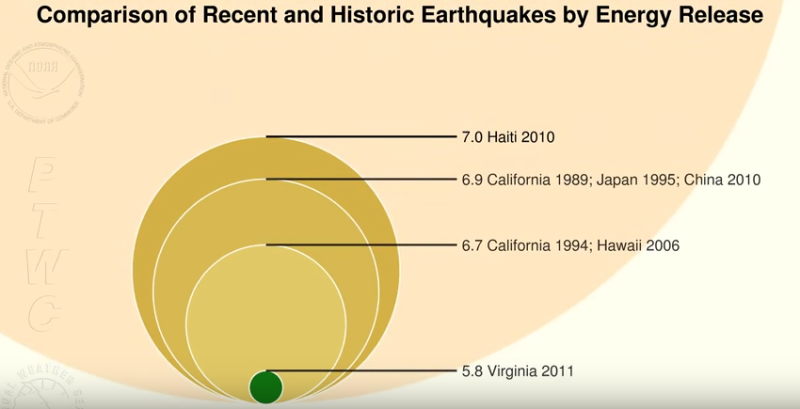Scientists measure both the energy released in an earthquake and its damage. In 1902, Italian scientist Giuseppe Mercalli introduced a scale that measures the intensity of an earthquake based on its effects on people and structures. A modified version of his scale is still in use today. The 12-point Modified Mercalli Intensity Scale describes how an earthquake is felt and the damage that it causes. The higher the Mercalli number is, the more damage found in the area. The Modified Mercalli number assigned to a particular location varies based on factors such as the distance from the focus and the area’s geology. For example, houses built on softer sediments may receive greater damage than those built on bedrock.
The amount of energy an earthquake releases is expressed in terms of its magnitude. Unlike intensity, which varies depending on how populated an area is, the magnitude of an earthquake is the same no matter where you are. To measure the magnitude of an earthquake, the American scientist Charles Richter developed a scale in 1935. Known as the Richter scale, it assigns a number based on the height of the waves on a seismogram (the visual output of a seismograph). Seismographs measure ground motion, including the energy released by an earthquake.
In 1979, American scientist Thomas Hanks and Japanese scientist Hiroo Kanamori introduced a new and more precise scale for measuring the magnitude of earthquakes: the moment magnitude scale. This is the scale most scientists use today. Its ratings are based on physical evidence, particularly the geometry of the earthquake. To determine each earthquake’s assigned number, scientists compare the area of the rupture along a fault to the amount of energy released. Scientists prefer the moment magnitude scale over the Richter scale because it can more accurately compare various types of earthquakes—big or small, near or far—at the same scale. Even though earthquakes with moment magnitudes of 5 or 6 can cause damage, in general, only earthquakes with a moment magnitude of 7 or higher are classified as “major” earthquakes.
Additional Resources:
Earthquake Intensity Maps for the 1906 San Francisco Earthquake
This post is part of Exploring Earthquakes, a rich collection of resources co-presented by the California Academy of Sciences and KQED. This material is also available as a free iBooks textbook and iTunes U course.
